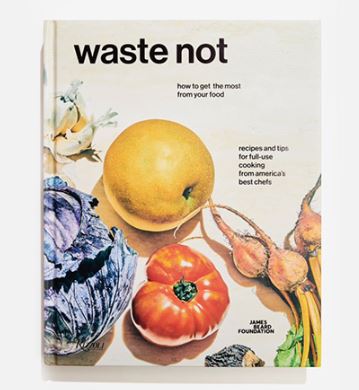Case Study: How a Small Business Utilized UGC to Drive Social Impact Campaigns
Meta Description: Explore how a small business effectively used User-Generated Content (UGC) to drive a social impact campaign, inspiring others to engage creatively and authentically in their marketing strategies.
Introduction
In today's evolving marketing landscape, the power of User-Generated Content (UGC) stands out as a transformative tool for businesses, particularly in social impact campaigns. Eldra Mohr, a digital marketing strategist with over 5 years of experience in SEO and content creation, has helped numerous small businesses harness the potential of UGC to drive engagement while championing important causes. This blog post will explore a compelling case study showcasing how a small business effectively utilized UGC to promote a social impact campaign, providing valuable insights and actionable strategies for aspiring marketers and small business owners.
Understanding User-Generated Content (UGC)

User-Generated Content refers to any content created by consumers or users rather than brands or organizations. From social media posts, reviews, and testimonials, to videos and blog comments, UGC allows businesses to engage their audiences authentically.
Importance of UGC in Marketing
The significance of UGC is underscored by numerous studies. For instance, according to a Nielsen report, 84% of consumers say user-generated content from strangers influences what they buy more than brand advertising. This statistic highlights how UGC builds trust and encourages engagement, making it a must-have in modern marketing strategies.
Case Study: A Small Business Making a Big Impact
Background of the Business
The small business at the center of our case study is GreenSprout, a local organic food store that prioritizes sustainability and community welfare. Their mission focuses on not just providing quality organic products but also empowering local farmers and promoting eco-friendly practices. Recognizing the opportunity to engage their communities through social impact, they set out to launch a UGC-driven campaign.

Social Issue Targeted
GreenSprout aimed to tackle food waste by raising awareness and encouraging eco-conscious consumer behaviors. The campaign's motivation was rooted in their belief that every bit of wasted food represents a lost opportunity for communities and the planet.
Objectives and Goals of the Campaign
The campaign was designed with clear objectives:
- Raise Awareness: Educate consumers about the impact of food waste.
- Encourage Action: Inspire individuals to adopt sustainable practices within their homes.
- Community Engagement: Build a stronger community around shared values of sustainability and environmental consciousness.
GreenSprout set measurable goals, aiming for:
- Over 500 social media shares using their campaign hashtag.
- A target of raising $5,000 for local food banks impacted by food waste.
UGC Strategies Employed
GreenSprout employed various strategies to effectively leverage UGC in their campaign:
1. Contests and Challenges
They launched the #WasteNotChallenge, inviting customers to share photos and videos of their creative ways to use leftover food. This encouraged participation by showcasing real-life sustainable practices.
2. Hashtags
The campaign's dedicated hashtag, #WasteNotChallenge, gained traction as participants shared their experiences on social media. The more people used the hashtag, the more visibility the campaign garnered.
3. Incentives
To further motivate participation, GreenSprout offered discounts on future purchases for participants. Additionally, for every submission related to food waste reduction, GreenSprout pledged to donate $1 to local food banks, amplifying community involvement and support.
Examples of Successful UGC Submissions
Several participants shared heartwarming stories along with their creative food usage ideas. For instance, one customer shared a recipe for vegetable stock using scraps, while another showcased how they turned stale bread into croutons, generating considerable social media buzz.
Results and Impact
The results from GreenSprout's campaign were impressive:
Engagement Metrics
- The campaign reached over 10,000 people across social media platforms.
- Engagement rates surged, with 1,200 unique shares, 3,500 likes, and numerous comments contributing to an active conversation around sustainability.
Social Impact
GreenSprout successfully raised $6,000, surpassing their goal and providing much-needed support to local food banks. The community's response showed a significant rise in awareness about food waste and sustainable practices.
Customer Testimonials
One participant said, “I never realized how easy it was to reduce food waste until I took part in the #WasteNotChallenge! I've changed how I view leftover food, and I'm grateful to GreenSprout for this initiative.”
Best Practices for UGC Campaigns
Based on GreenSprout's successful case study, here are a few best practices for other businesses looking to implement UGC strategies:
1. Encourage Participation
- Create relatable and manageable challenges that resonate with your audience.
- Make participation fun and simple for maximum engagement.
2. Build Relationships
- Time spent engaging with participants post-campaign through social media can foster loyalty and further connections.
- Acknowledge contributions publicly to show appreciation.
3. Utilize Feedback
- Leverage user feedback from the campaign to refine your products or services based on genuine input.
Statistics Supporting UGC Effectiveness
The effectiveness of UGC cannot be ignored. A study by Stackla found that 79% of people say user-generated content highly impacts their purchasing decisions. This statistic firmly establishes UGC as a cornerstone in fostering brand authenticity and trust among consumers.
Ethical Considerations
While leveraging UGC can be advantageous, ethical considerations are crucial. Always obtain permission from users before republishing their content and ensure to give proper credit. By establishing transparent communication with your audience, you cultivate trust and authenticity.
Conclusion
In conclusion, GreenSprout's case study illustrates the immense potential of User-Generated Content in driving social impact campaigns. By embracing authenticity and community engagement, businesses can inspire their audience while making meaningful contributions to society.
As you consider implementing UGC strategies in your marketing efforts, think about how you can engage your audience and make a difference in your community. Share your thoughts or experiences in the comments and explore UGC for your next campaign. Together, let’s inspire change and foster a sustainable future.
Supporting Resources
For further learning, check out these resources:
- Ultimate Guide to User-Generated Content
- How UGC Drives Brand Trust
- Best Practices for Social Impact Marketing
Take the first step towards a successful UGC strategy today!

